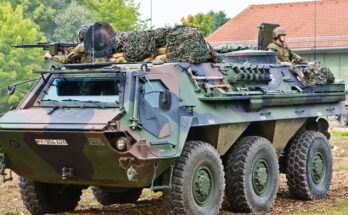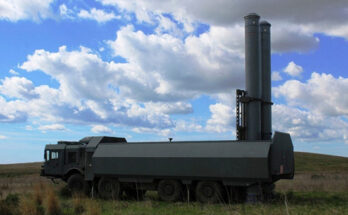by Dan Darling, International Military Markets Analyst, Forecast International.
In an interesting twist to the long-expected Serbian acquisition of a batch of MiG-29 combat aircraft and Russian-designed missile systems, Serbia’s defense minister, Zoran Djordjevic, has announced that both military platforms will be donated from Belarus.
The donation will be gifted gratis by Belarus, a development no doubt welcomed by Serbia, which had been negotiating with Russia for some of this weaponry since October 2015. It was then during a state visit that Serbian Prime Minister Aleksandar Vucic reached out to the Kremlin for an arms bundle that would enable Serbia to maintain a minimum standard of capability for its beleaguered military and provide a degree of protection for its airspace.
Just a month ago, on December 23, Prime Minister Vucic and Russian Defense Minister Sergei Shoigu signed a formal agreement under which Russia planned to donate to Serbia six used MiG-29s, 30 T-72 main battle tanks, and 30 BRDM-2 armored reconnaissance vehicles.
Serbia’s prime minister also inquired about the possibility of acquiring the Russian Buk-M2 (NATO designation: SA-6 Gainful) and 2K22 Tunguska (NATO designation: SA-19 Grison) air defense systems either through similar gifting by Moscow or via purchase, but to no avail.
So it appears that Belarus – closely tied to Russia in the broader realms of politics, policy, defense and economics – will step into the void where the missile defense systems are concerned. Like Belarus, Serbia is historically aligned to Russia in terms of ethnic, religious and political ties.
The issue of the MiG-29s becomes all the more curious in light of the Belarus-Serbia intergovernmental agreement on military-technical cooperation signed by Prime Minister Vucic during the visit by a Serbian governmental delegation to Belarus on January 26-27.
Is this agreement a mirror image of the one inked between Serbia and Russia in December? Is Belarus simply offloading used equipment that will serve as a supplement to the six MiG-29s due to be donated by Russia to Serbia? Was this an arrangement coordinated between Russia and Belarus in order to help a friendly nation rebuild its combat air and deterrent capability, or merely an acknowledgment by Belarus that, like Russia, its policy interests and direction align with those of Serbia?
Handover of the ex-Belarusian MiG-29s is slated for 2018.
Interestingly, the “gift” of MiG-29s by Belarus comes with the condition that Serbia will incur any and all repair, upgrade and modernization costs – costs that will presumably emerge following the handover. The cash-strapped Serbian military will therefore be tasked with absorbing Soviet-legacy aircraft that will require additional financial allocations in order to retain a state of fly-worthiness, or, worse, require funding from the limited capital portion of the defense budget just to make them suitable for a return to service.
Djordjevic was quoted in the Serbian media on January 30 as saying that it will already cost Serbia up to $200 million to modernize and overhaul the six MiG-29s due from Russia plus the existing four in Serbian Air Force stocks. This before the handover of Belarusian MiG-29s and two Buk missile systems, the latter also being delivered with the “owner assumes risk” repair, overhaul and modernization cost condition.
Also noteworthy is that Djordjevic stated that Serbia plans to negotiate with Belarus for the purchase of S-300 long-range surface-to-air missile systems (of the S-300P and S-300V variants). Serbia has repeatedly reached out to Russia for acquisition of such systems, but so far to little avail. Because of the precarious state of Serbian defense finances, the nation’s only hope for acquiring the S-300 would be via a similar donation by Belarus or Russia, or an extension of credit by the seller.
Please feel free to use this content with Forecast International and analyst attributions, along with a link to the article. Contact Ray Peterson at +1 (203) 426-0800 or via email at ray.peterson@forecast1.com for additional analysis.
The Forecast International International Military Markets series examines the military capabilities, equipment requirements, and force structures inventories of 140 countries, with corresponding coverage of the political and economic trends shaping the defense market outlook for individual countries and regions.
For 50 years, Forecast International intelligence reports have been the aerospace and defense industry standard for accurate research, analysis, and projections. Our experienced analysts compile, evaluate, and present accurate data for decision makers. FI's market research reports offer concise analysis of individual programs and identify market opportunities. Each report includes a program overview, detailed statistics, recent developments and a competitive analysis, culminating in production forecasts spanning 10 or 15 years. Let our market intelligence reports be a key part of reducing uncertainties and mastering your specific market and its growth potential. Find out more at www.forecastinternational.com



